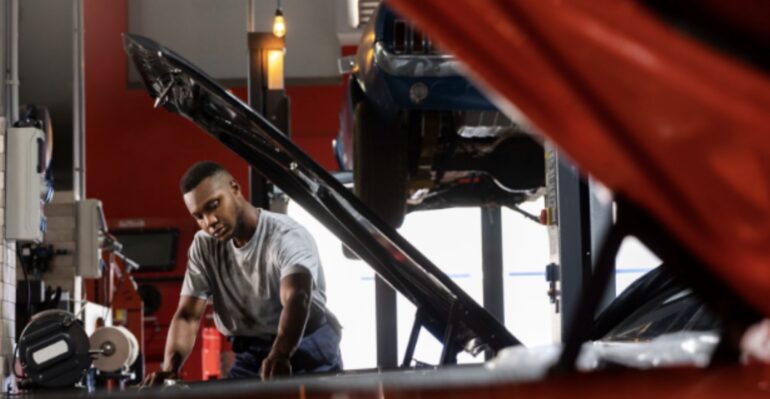So, you’ve decided to upgrade your car’s performance. Maybe it’s starting to feel a little sluggish. Maybe you want more power for towing, faster throttle response, or simply a more engaging ride. Whatever your reason, you’re not alone—performance upgrades are one of the most rewarding ways to reconnect with your vehicle.
But let’s be honest: the performance aftermarket can be intimidating if you’re new to it. There are thousands of parts, terms you may not recognize, and a lot of loud opinions. What should you upgrade first? What really makes a difference? And how do you avoid spending too much or damaging your car?
This guide is here to help you cut through the noise. We’ll walk through beginner-friendly performance upgrades, explain how tuning fits into the picture, and help you make smart, stress-free choices.
Table of Contents
What a Performance Upgrade Actually Means
The phrase “performance upgrade” might make you think of race cars, but it can mean something as simple as making your car feel more responsive and enjoyable to drive.
At its core, a performance upgrade can:
- Improve acceleration or torque
- Sharpen handling or braking
- Make the engine sound more aggressive
- Enhance towing power or throttle feel
And no, you don’t need to gut your interior or install a turbocharger to get noticeable results. A few smart, well-chosen modifications can significantly change your driving experience.
Smart First Mods That Make a Difference
When you’re just starting out, the best upgrades are the ones that are relatively low-risk and offer immediate, real-world benefits. These include:
- Cold Air Intakes: This is a popular beginner mod because it’s usually easy to install and can slightly improve horsepower by increasing airflow to your engine. It also enhances engine sound, which many drivers appreciate.
- Cat-Back Exhaust Systems: These systems improve exhaust flow, potentially increasing power and giving your vehicle a throatier tone. They’re often legal for street use and don’t affect emissions components.
- Performance Tires: If you’re still riding on stock all-seasons, upgraded tires can dramatically improve grip, steering feel, and braking—even without touching your engine.
- Brake Pads and Rotors: Performance pads and slotted rotors help reduce brake fade, which is especially useful in hilly areas or if you drive with a bit more enthusiasm than the average commuter.
These upgrades are generally easy to install, don’t require internal engine modifications, and give you immediate feedback on your investment.
Tuning: The Power of Software in Your Pocket
Once you’ve addressed the basics, tuning your vehicle’s computer might be the single most powerful (and cost-effective) change you can make.
Modern vehicles are run by increasingly sophisticated ECUs (Engine Control Units), which manage everything from air/fuel ratios to ignition timing and transmission behavior. A tuner modifies this software to prioritize performance, often unlocking power that was restricted from the factory for emissions, fuel economy, or drivability reasons.
For truck owners in particular, tuning has become a game-changer. For example, if you own a Ford F-150 and want more low-end torque for towing or faster throttle response off the line, using an F150 tuner can be a simple and safe way to optimize performance. Many tuners offer plug-and-play devices that can be installed in your driveway in under 30 minutes—and some let you switch between performance, towing, or economy modes with a few button presses.
Just make sure to choose a reputable brand that supports your model and engine configuration. Not all tuners are created equal, and cheap options may do more harm than good.
Does Every Mod Need a Tune?
Not always—but it depends on what you’re modifying.
Simple bolt-ons like cat-back exhausts or drop-in air filters usually don’t require tuning. However, if you’re changing your intake system, adding forced induction, or doing anything that affects how the engine breathes, a tune can help your ECU adapt and extract maximum benefit from the hardware.
Even if it’s not strictly necessary, tuning is often the final step that ties all your other modifications together. Think of it as fine-tuning your car’s brain so everything works in sync.
Avoid These First-Timer Mistakes
Performance upgrades are exciting—but they can also lead to disappointment if you dive in without a plan. Here are a few common pitfalls to avoid:
- No Clear Goal
Don’t upgrade blindly. Are you after better acceleration? Tighter handling? More towing power? A clear goal keeps you from wasting money on parts you don’t need—or that don’t work well together. - Chasing Horsepower Over Balance
High horsepower numbers look good on paper, but daily drivability matters more. A car that handles, stops, and responds well is more fun to drive than one that just looks fast in a spec sheet. - Buying Cheap Parts
We get it—upgrades can get expensive. But bargain-basement parts often come with poor fitment, reliability issues, or worse performance than stock. If your budget is tight, prioritize quality over quantity. - Forgetting About Maintenance
Before you upgrade, make sure your car is running smoothly. Performance parts won’t make up for neglected oil changes, worn spark plugs, or aging suspension components. - Overlooking Warranty or Legal Issues
Some mods (especially tuning) can void your factory warranty or violate emissions laws. Always do your research—and be honest with your dealership or inspector.
Putting It All Together
The best first performance upgrade isn’t the flashiest one—it’s the one that makes your car more fun, responsive, and aligned with how you actually drive. Whether that means installing a cold air intake, upgrading your tires, or using an F-150 tuner to improve towing performance, small changes can lead to big satisfaction.
And remember: upgrading your car isn’t a one-time project. It’s an ongoing process that grows with your skills, your confidence, and your driving needs. Start with the basics, do your homework, and most importantly—enjoy the journey.

